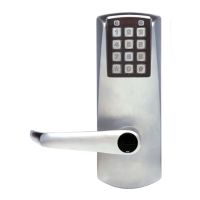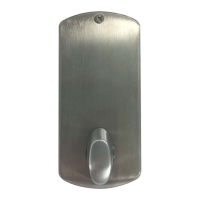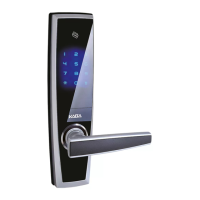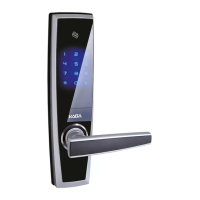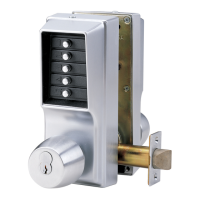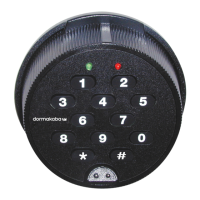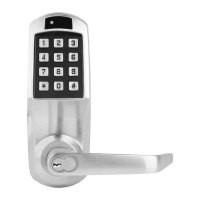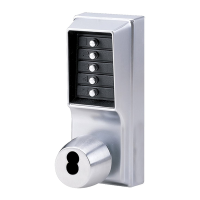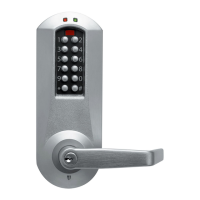
Do you have a question about the Kaba E-Plex 5000 and is the answer not in the manual?
| Power Supply | Battery |
|---|---|
| Housing Material | Metal |
| Dimensions | Varies by model |
| Programming | Via keypad |
| Compatibility | Fits most standard doors |
| Backset | 2-3/4" (70 mm) standard, 2-3/8" (60 mm) available |
Describes the primary characteristics of the E-Plex 5000 in factory mode, including default access.
Defines the state where the lock is operational for user access, not in factory or programming mode.
Explains how to enter programming mode using the master/manager code and '#' character.
Outlines the initial steps for programming the E-Plex 5000 from factory mode.
Lists factory default settings for various programmable parameters of the E-Plex 5000 lock.
Details the general steps for performing programming functions using pushbutton commands.
Describes three reset levels: Code 099#, Code 299#, and Hard Reset for different restoration needs.
Specifies that only a Master User can perform this initial programming function.
Details steps for a Master User to change the existing Master User Access Code.
Explains how to set the current date and time for accurate programming and auditing.
Defines user levels required for setting Lock ID and Unlock Time.
Specifies user levels for configuring the duration of Passage Mode.
Explains how to set tamper time parameters for wrong code entries and shutdown mode.
Details how to adjust the keypad buzzer volume to different levels.
Explains the dual functionality of Master and Manager Codes for opening doors or entering programming mode.
Details how users occupy specific locations in the user table, with User 000 being the Master.
Describes consequences of exceeding time limits for key sequence entry or pauses between pushes.
Defines the Master User as the top-level manager for initial setup and all lock functions.
Describes a Manager's ability to program most lock functions, with specific exceptions listed.
Defines an Access User as someone who can open the lock, with limited table space.
Explains a Service User's temporary access code, which expires after a set period.
Provides examples of acceptable and unacceptable user access codes based on length and the master code.
Explains the concept of a 3-digit User ID location assigned by the Master or Manager.
Details the procedure for adding or modifying a Manager Access Code for a specific User ID.
Explains how to add or modify a Service User Access Code with a configurable time period.
Describes how to delete User Access Codes to free up numbers for new users.
Details the procedure for deleting Manager Access Codes to reassign them.
Explains how to delete Service User Access Codes before their expiry time.
Provides a procedure to delete all user and service codes, excluding master and manager.
Explains how to activate previously de-activated User Access Codes.
Details how to activate a de-activated Manager Access Code.
Explains how to activate a de-activated Service User Access Code.
Describes how to re-activate all regular and service user access codes that are inactive.
Explains how to enable or disable Passage Mode for a door.
Details how to de-activate User Access Codes for temporary unavailability.
Explains how to de-activate Manager Access Codes for temporary unavailability.
Details how to de-activate Service User Access Codes for temporary unavailability.
Explains how to de-activate all active user access codes, excluding master, manager, and M-Unit.
Describes how to activate or de-activate Lockout Mode, affecting all users except the Master.
Details how to use a diagnostic code to test lock components like LEDs and pushbuttons.
Provides information on lock battery life and guidelines for replacement when low.
Lists commands for configuring lock settings like master code, date/time, and access code length.
Lists commands for adding/modifying user, manager, and service user access codes.
Lists commands for deleting user, manager, and service user access codes.
Lists commands for activating and de-activating various user types and modes.
Details the command for performing manual diagnostics on the lock.
Defines the meaning of various LED indications and audible feedback for lock operations.

